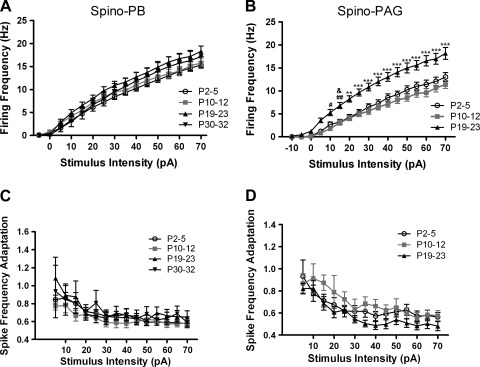Fig. 6.
Firing rate of spino-PAG, but not spino-PB, projection neurons accelerates during postnatal development. A: plot of mean instantaneous firing frequency as a function of stimulus intensity in spino-PB neurons reveals no significant differences in repetitive firing between age groups (P > 0.05; 2-way ANOVA; n = 12–30 in each group). B: in contrast, P19–23 spino-PAG neurons fired at a significantly higher frequency compared with younger ages (#P < 0.05, ##P < 0.01 vs. P10–12; &P < 0.05 vs. P2–5; **P < 0.01, ***P < 0.001 vs. both ages; 2-way ANOVA with Bonferroni posttests; n = 14–20 in each group). Spino-PAG neurons were not analyzed at P30–32 because of the low number (n = 3) of tonically firing neurons observed at this age. C and D: the degree of spike frequency adaptation across a range of stimulus intensities did not change significantly with age in either population of lamina I projection neurons (P > 0.05; 2-way ANOVA). The numbers of animals used were the same as described in Fig. 2.

